Chinese Healing Exercises (12 page)
Read Chinese Healing Exercises Online
Authors: Steven Cardoza
Tags: #Taiji, #Qi Gong, #Daoist yoga, #Chinese Healing, #Health, #medicine, #remedy, #energy

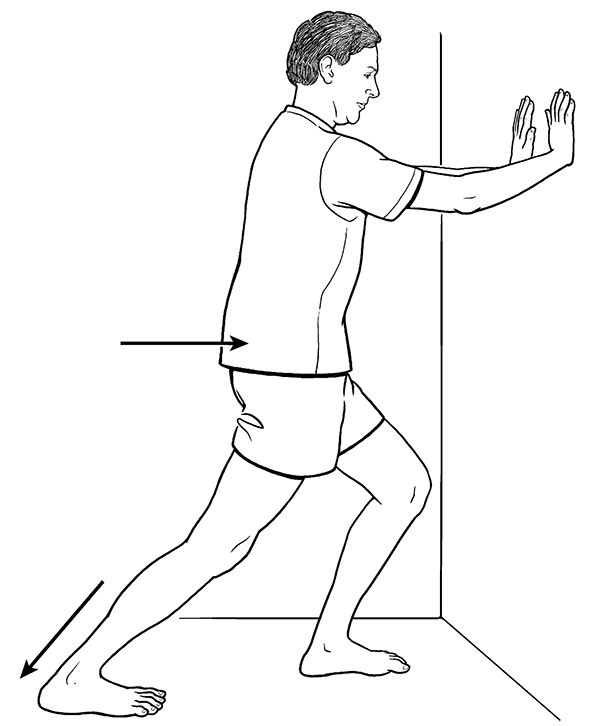 Figure 3.5 (Back of Ankle/Achilles Tendon Stretch)
Figure 3.5 (Back of Ankle/Achilles Tendon Stretch)
4. Knee Rotations
This is an exercise that has some inherent risk to it, and one that I do not recommend for people with any type of knee problem. The only reason I include it here is because this is an exercise I have seen commonly taught by many Chinese instructors, and by others who have learned it from Chinese instructors, and in no case has any warning been made regarding its practice. With proper care, it may be relatively safely practiced by people with healthy knees. A safer alternative for everyone is the
Hula Rolls
(chapter 6, Exercise 3), which are primarily for the low back and hips, but puts the knees through a
minimal
rotary side bend.
Torso Twist with Arm Swing
(chapter 6, Exercise 1) also safely allows for some slight rotary motion in the knee.
While the idea of this exercise is to open the knee joint, which is a good, desirable outcome, here's why it can be risky nevertheless. The knee joint is designed to bend and straighten, and really, that's it. It does have some lateral flexibility, used for example when skiing, but that's more of a safeguard against damaging the joint than it is a motion that the joint is intended for on a regular basis. When overdone, or when too much weight is placed on the joint when the knee is in that lateral or medial position (bent to the outside or inside of the leg), that can cause tears in the meniscus, the cartilaginous discs within the knee joint that serve as cushions and shock absorbers, or medial or lateral collateral ligament damage. The collateral ligaments provide stability in the knee. These are relatively common injuries among athletes, dancers, and heavy labor workers. With those cautions stated, this is the exercise.
Purpose
Physical:
Puts the knee through its full rotational range of motion, facilitates opening the knee joint, releases tension in the muscles and ligaments around the knee.
Energetic:
Stimulates and activates the leg He Sea points, located around the knee. The Sea points are used for various intestinal disorders. Both Yin and Yang Sea points primarily work on the yang organs, notably the stomach. Some clear Damp Heat in the Urinary Bladder and Intestines, which can manifest as inflammation, irritation, and infection, causing diarrhea, urinary difficulties, and edema. The knees are also an indicator of Kidney health. Kidney problems tend to shunt qi into the knees, causing knee discomfort, pain, contracture, swelling, or instability. Freeing up the qi in the knees will help the local knee problem and will relieve the underlying Kidney issue, if not resolve it outright.
Techniques used
Joint mobilization, acupressure to the soles of the feet.
Method
While standing, bend forward enough to be able to put your hands on your knees. Keep your back as straight as possible, not curved forward or arched back, although inclined forward. With your hands, put just enough pressure on your knees so they feel supported and stable
(
Fig 3.6A
on next page
).
Maintaining just that slight pressure, make clockwise circles with your knees
(
Fig 3.6B
).
They will naturally bend more when in the 12 o'clock position, and straighten more in the 6 o'clock position. Feel for and slightly accentuate the increase of pressure on the soles of your feet through this rotation, so you
feel more pressure on the left side of your feet in the 9 o'clock position, the balls of your
feet in the 12 o'clock position, the right side of your feet in the 3 o'clock position, and your
heels in the 6 o'clock position. That will stimulate various acupoints on the soles of each foot. After ten to twelve circles clockwise, reverse direction for the same number of circles counterclockwise.
The circles should be done at a comfortable rate, one circle every one or two seconds. Be careful to not make the circles too large, as that would contribute to the potential knee injuries outlined earlier.
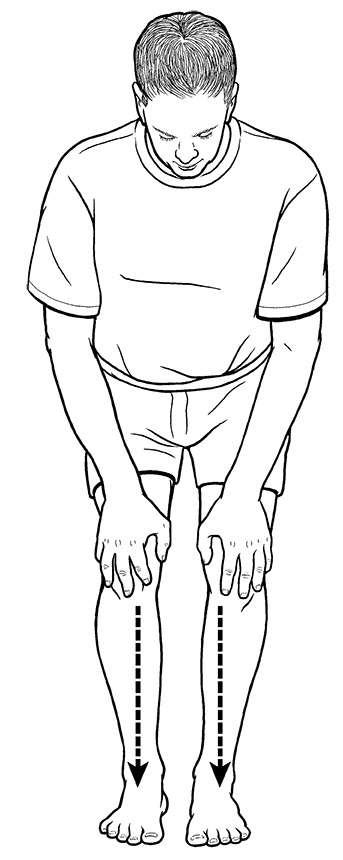 Figure 3.6A (Knee Rotations)
Figure 3.6A (Knee Rotations)
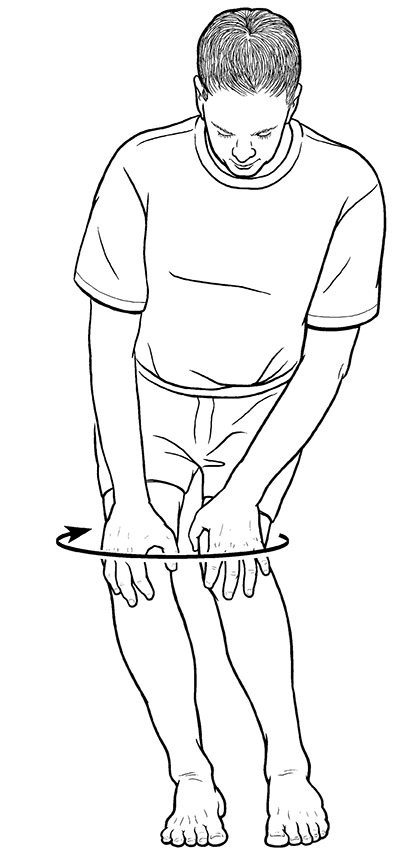 Figure 3.6B (Knee Rotations)
Figure 3.6B (Knee Rotations)
Four
Finger and Hand
In this age of ubiquitous computer keyboards, used both at work and at home, and gaming consoles used extensively for recreation, more people than ever suffer from various repetitive stress injuries, tendinitis, carpal tunnel syndrome, and ulnar nerve damage. Many also simultaneously suffer neck, shoulder, and upper back pain from hunching in front of a computer monitor, holding their hands, wrists, elbows, and shoulders tight in unnatural positions, often unconsciously, for hours at a time. Of course, there are many other causes of hand and arm discomfortâsports-related and other injuries, arthritis, musician's overuse and postural complaints, and so onâbut computer-related problems cut across almost all walks of life and are particularly prevalent today. No matter what the cause, these exercises are of tremendous help in preventing and reversing such conditions, and many can be done during a short five- or ten-minute break while still sitting at your desk.
1. Flex and Extend Fingers
This is a good warm-up exercise for all the finger and hand exercises that follow.
Purpose
Physical:
This exercise involves actively using the muscles in your hands to mobilize your finger and hand joints. It draws more blood into your hands and fingers, and because the involved muscles also attach in the upper forearm, these benefits will occur throughout your forearms too. Blood always brings nutrition, oxygen, and qi in and helps remove local toxic accumulations should any be present. It also helps lubricate the joints and muscles, relaxing those which may be stiff and achy from relative inactivity or overuse, effectively “dried out” from reduced blood flow or inflammation. Conversely, in some people blood and other body fluids may pool, creating a swelling. The activity of this exercise will help pump out the pooled fluids, and over time it will strengthen the muscles so that whatever your finger, hand, and forearm concerns may be, they will improve and have a reduced likelihood of returning.
Energetic:
Stimulates all the Five Phase points (Jing Well, Ying Spring, Shu Stream, Jing River, and He Sea) to varying degrees.
The Hand Jing Well points are stimulated indirectly, as blood, moved by the physical aspect of the exercise, brings more qi to the tips of the fingers where the Well points are located. The Jing Well points have an invigorating effect on the mind, and so this practice may help to improve your focus throughout the course of your practice session and into the rest of the day. Mental functioning is additionally stimulated by any directed hand usage. We use our hands to grasp and apprehend, which are more than metaphors for the grasping and apprehending synonymous with understanding. The Spring and Stream points are involved in this result, and other deeper, core energetics outside the scope of this book also come into play.
The hand Ying Spring acupuncture points are more strongly stimulated. They are located on the hand, near where the fingers join the hand. As in the Foot Spring points, they are useful in clearing heat. One of the Western correlations to clearing heat means reducing inflammation, so your fingers and hands will benefit from that energetic effect. Pericardium 8, Laogong, is the Ying Spring point located in the center of the palm. For anyone already sufficiently advanced in a qigong practice, keeping P8 open and activated will assist in sensing, projecting, and absorbing qi.
The arm Shu Stream points are found at various places around the circumference of the hand, primarily between where the fingers join the hand, and around the wrist. Stream points are most commonly used to treat Bi syndromes (more colloquially called Painful Obstruction syndromes), which are often the same as or associated with various types of arthritis pain. This is especially true if Damp is part of the pathogenic picture, which is almost always the case in Bi syndromes. That Damp may or may not visibly manifest as swelling or edema.
The Arm Jing River points are classically used to clear both heat and cold sensations, specifically centered around the chest. They are useful for cough, asthma, throat, and respiratory problems, especially those associated with heat or cold. They are also useful to help resolve local pain.
The Arm He Sea points are located around the elbow. Classically they are used to treat a variety of stomach and intestinal disorders, and many have psychological, psychoemo
tional, and psychosomatic functions. This exercise only minimally stimulates the Sea
points, so while you will notice some of those benefits, they will be correspondingly slight.
Techniques used
Simple flexion and extension.
Method
Standing or seated, with your arms hanging loose at your sides, make moderately tight fists with both hands, tighter than a loose fist but not so tight that your hands feel hard. Then open your fingers wide, extending them fully so that they are angled slightly backward from your hand, and so that you can see the tendons standing out at the backs of your hands
(
Fig 4.1
on next page
).
If your hands are painful or weak, open and close them fifteen to twenty times. Otherwise, open and close them as many times as you can until a comfortable fatigue sets in. Try for a hundred times. When that becomes easy, gradually increase the number by five to ten each week, until you get to two hundred repetitions.
Beyond two hundred, you may make your muscles stronger, but not much additional
benefit will occur.
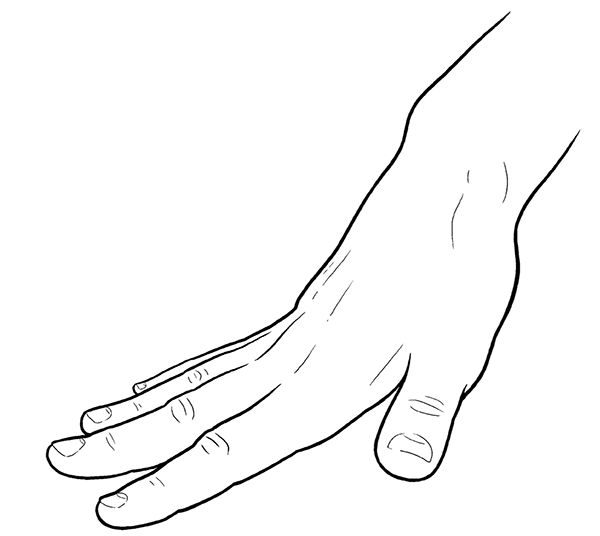 Figure 4.1 (Flex and Extend Fingers)
Figure 4.1 (Flex and Extend Fingers)
The rate or speed can vary depending on the purpose for which the exercise is being practiced. In the case of painful, arthritic, or weak hands, a slow pace is fine, as you just want to begin to soften and open your hands. Fully open and close your hands once every two to three seconds. In all other cases related to the level of self-care presented here, a brisk rate is preferred. Fully open and close your hands two or three times each second. If you remember how you may have counted seconds as a child, “one-Missis-sippi, two-Missis-sippi ⦠” and open and close your hands to that third-of-a-second count, that's an easy way to do three each second. Even at that rate, be sure to make a moderately firm fist and then fully extend your fingers each time.
2. Backward Finger Extension and Stretch
Purpose
Physical:
Extend and stretch the fingers to open the joint spaces and stretch muscles; stretch the palmer aponeurosis (the thick, tendinous membrane on the palm) and reinforce the connection from palm to fingers.
Energetic:
Each finger has at least three separate energetic correspondences. Six of the twelve main acupuncture meridians end at the tips of the fingers; in Korean hand acupuncture, the hand is a hologram for the entire body; and in the Daoist Five Element perspective, each finger corresponds to one of the five elements. While this exercise will produce benefits in each of those systemsâeach influences the whole body in their own wayâI learned this from a Daoist qigong master whose focus was on the Five Element connection, so that's what I'll address here. The thumb corresponds to the Earth Element (Spleen and Stomach), the index finger to Wood (Liver and Gall Bladder), the middle finger to Fire (Heart and Small Intestine, and secondarily, Pericardium and Sanjiao), the ring finger to Metal (Lung and Large Intestine), and the little finger to Water (Kidney and Urinary Bladder). As you exercise each finger, the corresponding Element and related body regions are stimulated and functionally benefited. This is not mediated through the meridian system (the meridian end points of each finger do not correspond to the Five Elements) but through Element correspondence in a type of reflexology.
Techniques Used
Extension and stretch, tissue lengthening, Daoist reflexology.
Method
This may be done seated or standing. Place your left hand in front of you, directly in front of the center of your chest, so that the palm is facing directly to the right, with fingers pointing upward toward the sky. Your elbow should be out to your left side and slightly lowered so your forearm is angled downward just a bit. Keep your armpit open, so that you could easily fit your right fist in it. Keep your shoulder down and the muscles in your shoulder and neck relaxed.
Grasp your left hand with your right, placing the fingers of your right hand on the back of your left, and your right thumb approximately in the center of your palm
(
Fig 4.2
on next page
).
Make your grip firm, but not tense or hard. Hold your right hand completely stationary in space; do not let it move as you follow the next instructions
(
Fig 4.3A
on next page
).
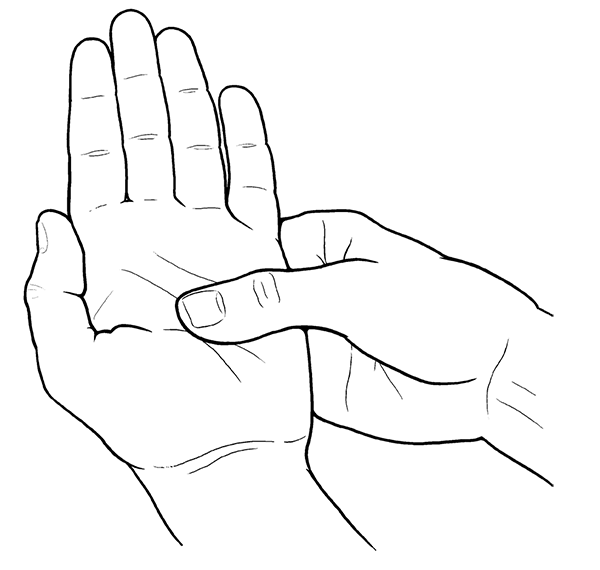 Figure 4.2 (Backward Finger Extension and Stretch)
Figure 4.2 (Backward Finger Extension and Stretch)
 Figure 4.3A (Backward Finger Extension and Stretch)
Figure 4.3A (Backward Finger Extension and Stretch)
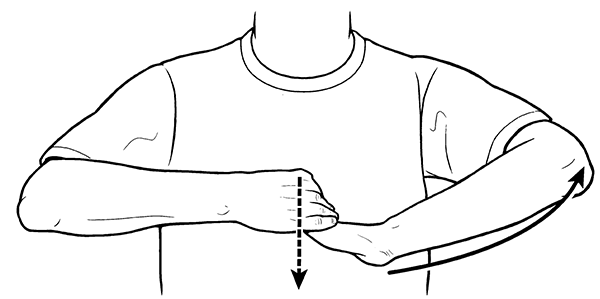 Figure 4.3B (Backward Finger Extension and Stretch)
Figure 4.3B (Backward Finger Extension and Stretch)
Extend your left elbow farther out to the left, in a gentle upward-curving arc, almost as though you are trying to jab your elbow into the person next to you, but slowly
(
Fig 4.3B
).
Do not lift your left shoulder, do not tighten the muscles between your shoulder and neck, and keep your head straight, perpendicular to the ground. Feel your shoulder blade rotating, so that the top of your shoulder blade moves toward your spine, and the bottom tip moves out and up, mirroring the arc in your elbow. In fact, the movement should come from your shoulder blade as much as you are able.
The movement of your arm will pull your left hand through your right. Feel for the pull and stretch of the left palmar aponeurosis. To begin with, target your little finger with your right hand so it is bent backward and stretched as it passes between your right thumb and fingers. Pull your little finger entirely free of your right hand, and then return to the starting position and repeat twice more still focusing on the little finger. Then, by positioning your right hand just a little closer to your left thumb, repeat the left arm movement three more times, focusing on the ring finger this time. Continue in this way through the middle and index fingers, extending and stretching each three times.